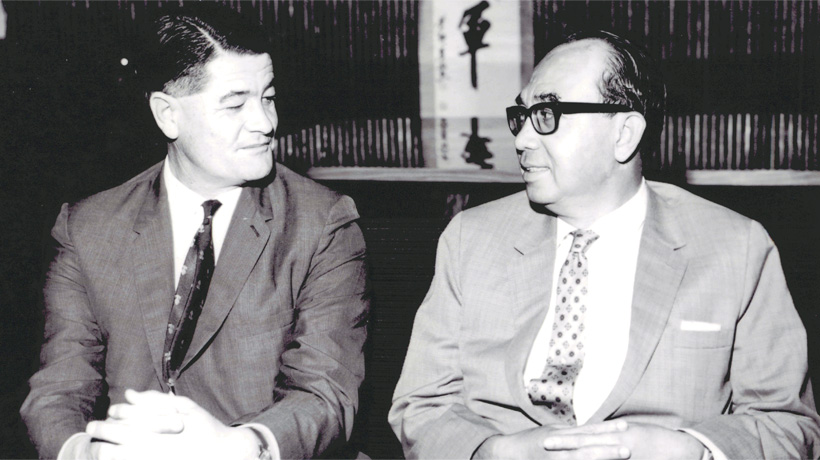Chapter 1
Testing Peace: A Partnership Reinforced
The Malayan Emergency
The Cold War in Asia meant that an enduring peace in Malaya remained elusive. Only three years after the end of the Japanese occupation of Malaya, the Malayan Emergency was declared in June 1948.
Australia and other allies recognised that Malaya's central geostrategic location in the region was both an asset and a vulnerability. The suppression of the communist insurgents was therefore seen as a regional responsibility. In August 1949, a unified Commonwealth defence planning coalition between Australia, New Zealand and Britain for the protection of the Malaya region, known as ANZAM, was formed. Australia's commitment to ANZAM brought with it a sharpened sense of place in Southeast Asia and a policy of concentrating defence efforts in its neighbourhood.11 In December 1949, ANZAM became operational with the realisation 'that the fates of South- East Asia and Australia are linked'.12 The following year, Australia's Minister for External Affairs Percy Spender would tell Parliament that Malaya, in particular, was of 'supreme importance' in this equation.13
Australia's commitment to the Emergency began in May 1950 when Prime Minister Robert Menzies announced Australia's first ever peacetime deployment—a squadron of Royal Australian Air Force (RAAF) Dakota transport aircraft and a squadron of Lincoln heavy bombers to Malaya.14 Under the Commonwealth (Far East) Strategic Reserve (CSR/FESR) announced in April 1955, this commitment quickly expanded. Between August and October 1955, an RAAF airfield construction squadron began work on extending and reconstructing the airstrips at Penang's Butterworth airbase in preparation for the fighter and bomber squadrons to follow.15An Army battalion was also deployed to Penang, and two Royal Australian Navy destroyers already serving in the area became the naval element of the commitment. The full complement of Australian Military Forces—navy, army and air—remained in Malaya until 1963. After that, an Australian battalion group served on rotation with the CSR in Malaysia until the beginning of 1970, when it moved to Singapore.16


Confrontation
In September 1963, the Federation of Malaysia was born, bringing Malaya, In September 1963, the Federation of Malaysia was born, bringing Malaya, Singapore, Sarawak and Sabah together as one nation.17 The Herald in Melbourne announced that the 'Malaysia flag flies' in Kuala Lumpur, describing coloured lights twinkling and fireworks flashing in celebration.18 In a less optimistic tone, the report went on to say that a shadow had fallen over the celebrations as neighbours Indonesia and the Philippines objected to the new federation, claiming Britain's disposal of its former colonies in this way was 'neo-colonialism'.19 Indonesia's President Sukarno refused to recognise Malaysia and committed Indonesia to a Ganyang Malaysia (Crush Malaysia) campaign.20 From the outset Australia supported the new federation, accepting the risk that this would influence its other relationships in the region. The Australian Government consequently determined to direct its efforts to finding a diplomatic, rather than defence, resolution to what became known as Konfrontasi. 21
In 1964 however, in the face of increased threats of sabotage in Singapore and Malaysia, the Australian Government agreed to a Malaysian request to use Australian forces with the CSR against Indonesian-trained infiltrators on the Malayan mainland.22 With the threat escalating, Australia subsequently agreed to Malaysia's request to deploy Australian forces to the Borneo territories in January 1965, while continuing also to seek a political settlement. Following a period of unpredictability, and some military engagement, the dispute was eventually resolved and terms for settlement reached in May 1966.23 In recognition of Australia's commitment throughout the 1950s and 1960s, the Malaysian Government issued a commemorative medal, the Pingat Jasa Malaysia, in 2004.24 In January 2006 the first awards were received by the Governor-General Major General Michael Jeffrey AC CVO (Ret'd)25 and the Chief of the Australian Defence Force (ADF) Air Chief Marshal Angus Houston AC AFC.